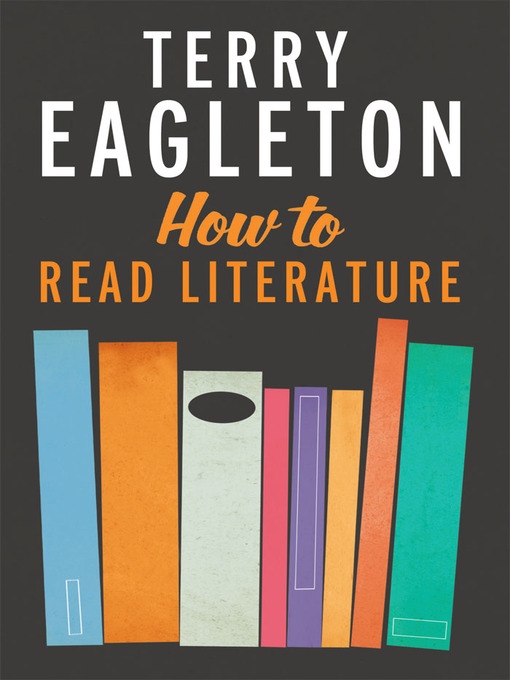
How to Read Literature
کتاب های مرتبط
- اطلاعات
- نقد و بررسی
- دیدگاه کاربران
نقد و بررسی

May 13, 2013
Notable and polarizing English critic Eagleton provides basic instruction on close reading and literary criticism for beginners. He discusses the opening sentences of some famous works and explains how they establish tone, employ irony, or create dramatic effect. On Characterization, Eagleton explores some of Dickens's "freakish figures", Shakespeare's Othello as "a character without a context", and brings himself to task on a "woefully off the mark" early reading of Sue Bridehead in Thomas Hardy's Jude the Obscure. Eagleton (Literary Theory: An Introduction) explains different types of narrators, and the ways in which authors may reveal bias or "rig their narratives to suit their fictional purposes." He shows the process of literary interpretation in action, first with a silly analysis of "Baa Baa Black Sheep", and then more seriously delving into the themes, symbolism, and imagery of Dickens's Great Expectations. Crucially, he breaks down differences between Realism and Modernism in terms of creating characters, handling conflict, and dealing with the limitations of a narrative. He points to Laurence Sterne's Tristram Shandy as a subversion of Realism and an example of Modernism before its time. This is Eagleton at his most charming and an excellent guide for literature students early in their education or those seeking a refresher course.

May 1, 2013
A genial guide to exactly what the title promises, for readers who aren't particularly experienced or critical. Though he enjoys renown in Britain as a literature professor, Eagleton (Across the Pond: An Englishman's View of America, 2013, etc.) maintains from the outset that this is "a guide for beginners." As such, it might confuse those beginners who are new to Wuthering Heights, Jude the Obscure or much of Dickens, since at least a cursory knowledge of the novels he is using to make his points would seem helpful in understanding those points. Yet this short book benefits from a conversational, even humorous tone and rarely requires much in the way of literary or critical theory as a prerequisite for its discussion of issues that most readers will recognize: Characters are not real people, and they have no existence outside the novel. Literature can generate multiple meanings, without agreement on the "right" one. A consideration of the language employed is crucial, for literature is nothing more (and nothing less) than its words. Initial chapters on "Openings" and "Characters" seem to hopscotch all over the place, since literature here encompasses poems, plays and novels (with a span of centuries and continents), in whatever order the author chooses to juxtapose. Chapters on "Narrative" and "Interpretation" are meatier and more focused. In the former, Eagleton reminds readers that "there is rarely any simple relation between authors and their works," while illuminating a range of strategies that include the omniscient and unreliable narrators. The latter includes a very funny exegesis of "Baa Baa Black Sheep" and an interpretive linkage of Dickens and Harry Potter. As for the concluding "Value," it is the most provocative and least convincing of the lot, dismissing Updike as "artful but lifeless" while praising the "superlative literary art" of Carol Shields. Perfect for an intro course that features some of the literature the book discusses.
COPYRIGHT(2013) Kirkus Reviews, ALL RIGHTS RESERVED.

June 15, 2013
Renowned UK critic and best-selling author Eagleton (Literary Theory: An Introduction and After Theory) is at it again. Here he attempts to teach new students to read with greater insight. In-depth but rambling analyses consider how concepts such as character, narrative, and originality came to be valued differently by various literary movements. His close reading of randomly selected "first lines" is adept but inconclusive, and takes time that could have been spent on such concrete literary elements as theme and syntax. Despite a long-winded defense of his own bad interpretation of "Baa Baa Black Sheep," his witty and erudite prose does reveal brilliant insights about an array of texts. VERDICT While Eagleton is obviously well read, with an unquestionable knowledge of literary theory, this book may not achieve its ambitions. Unsurprisingly, students will not actually learn to read literature from this volume but over time might further develop their interest in great books by careful perusal of the cited works.--Lara Jacobs, Brooklyn
Copyright 2013 Library Journal, LLC Used with permission.

May 15, 2013
In this serious but breezy and idiosyncratic take on how to read and enjoy literature, English critic Eagleton performs an important if basic service, distinguishing the way people talk about fiction, drama, or poetry from the way we discuss real life. His emphasis is on formhow literature worksrather than content. The book's chapter headingsOpenings, Character, Narrative, Interpretation, and Valuesummarize, but do not do justice to, his sophisticated approach. Eagleton's erudition is supplemented with entertaining if occasionally over-the-top wit, most notably in his close textual analysis of Baa Baa Black Sheep and in his conclusion regarding the quality of literature, invoking the atrocious Scottish poet William McGonagall. His literary examples are well chosen and largely canonicalincluding Shakespeare, Dickens, and Austen (but also the Harry Potter series)and are predominantly, although not exclusively, British. Eagleton does not elucidate how he expects his audience, which presumably doesn't yet know how to read literature, to be familiar with these, or any, authors. More seriously, though, his book should appeal to readers of James Wood's more traditional How Fiction Works (2008).(Reprinted with permission of Booklist, copyright 2013, American Library Association.)

























دیدگاه کاربران